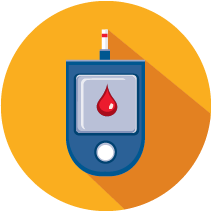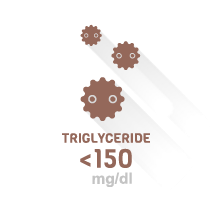Metabolic syndrome is a group of risk factors, or conditions, that increase your risk of heart disease, stroke, and diabetes. Over 34% of U.S. adults have metabolic syndrome.1
How do I know if I have metabolic syndrome?
To make a diagnosis, doctors look for the presence of at least three of the following risk factors:

|
High Blood Pressure
High blood pressure (hypertension) means the pressure in your arteries is higher than it should be. For this trial, a blood pressure of 130/85mm Hg or above is considered high.
|
High Blood Sugar
High blood sugar (prediabetes) means your blood sugar levels are higher than normal. For this trial, fasting blood sugar levels are considered high if they are between 100mg/dL and 125 mg/dL.
|

|
 |
High Triglycerides
Triglycerides are a type of fat found in your blood. For this trial, fasting triglyceride levels of 150mg/dL or above are considered to be high.
|
Low HDL Cholesterol
A high-density lipoprotein (HDL) is a special protein in your cholesterol. HDL is known as the good cholesterol. You want a higher HDL score to improve your health. For this trial, fasting HDL cholesterol less than 40mg/dL for men and less than 50mg/dL for women are considered low.
|
 |
 |
Larger Waist
Larger waist refers to the extra inches around your waist. For this trial, a waist measurement 40 inches or above for men and 35 inches or above for women is considered a risk factor.
|